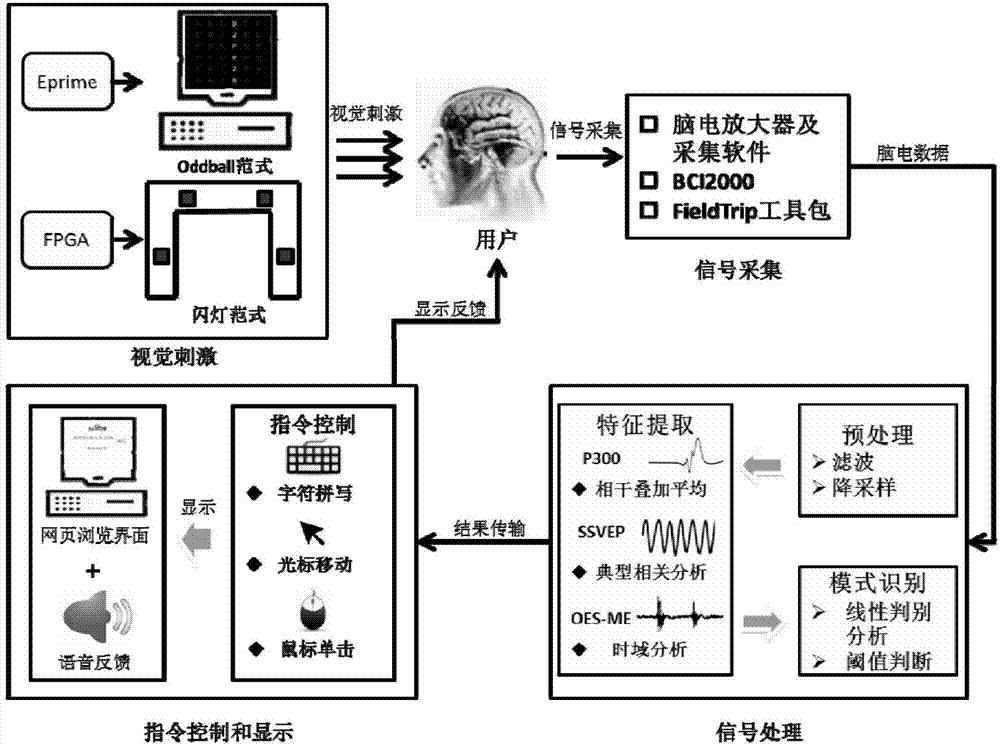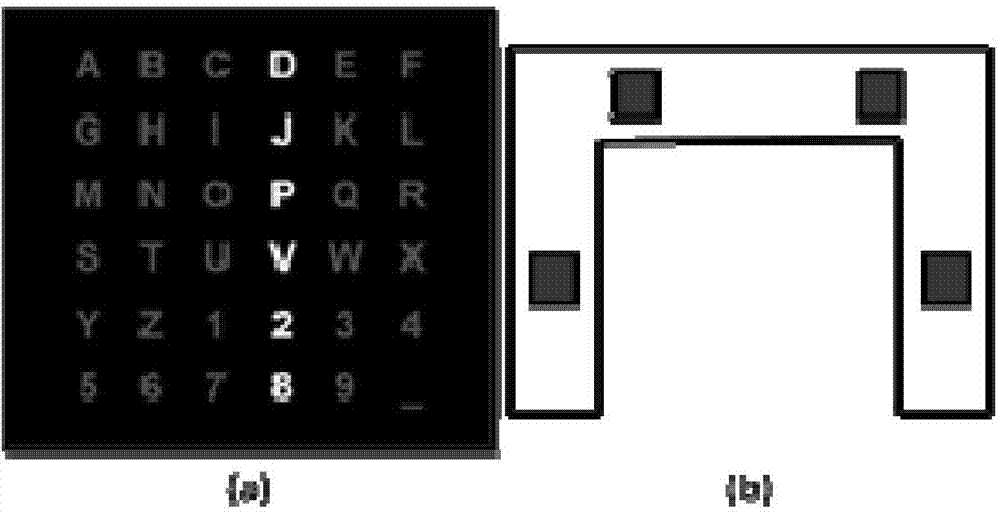Tri-modal serial brain-computer interface method based on multi-information fusion
A multi-information fusion and three-modal technology, which is applied in computer components, mechanical mode conversion, user/computer interaction input/output, etc., can solve the problem that the number of optional characters is limited, difficult to meet, insufficient to support user tasks and Actions and other issues, to achieve the effect of multiple options, high stability, considerable social and economic benefits
- Summary
- Abstract
- Description
- Claims
- Application Information
AI Technical Summary
Problems solved by technology
Method used
Image
Examples
Embodiment Construction
[0031] In order to make the object, technical solution and advantages of the present invention clearer, the implementation manner of the present invention will be further described in detail below in conjunction with the accompanying drawings.
[0032] A hybrid brain-computer interface (hBCI) is a brain-computer interface that combines at least one other system or device to help humans send information. Other communication systems here can be: another brain-computer interface device (pure hBCI); devices based on other physiological signals (physiological hBCI), such as myoelectricity, oculoelectricity and heart rate, etc.; other communication devices (hybrid hBCI), Can be assistive devices for people with disabilities or common input devices (keyboard and mouse, etc.). Hybrid-paradigm BCIs can be divided into two basic types according to their hybrid control methods, serial mode and parallel mode. In the serial mode, different signals are controlled in sequence, and this type...
PUM
 Login to View More
Login to View More Abstract
Description
Claims
Application Information
 Login to View More
Login to View More - R&D
- Intellectual Property
- Life Sciences
- Materials
- Tech Scout
- Unparalleled Data Quality
- Higher Quality Content
- 60% Fewer Hallucinations
Browse by: Latest US Patents, China's latest patents, Technical Efficacy Thesaurus, Application Domain, Technology Topic, Popular Technical Reports.
© 2025 PatSnap. All rights reserved.Legal|Privacy policy|Modern Slavery Act Transparency Statement|Sitemap|About US| Contact US: help@patsnap.com



